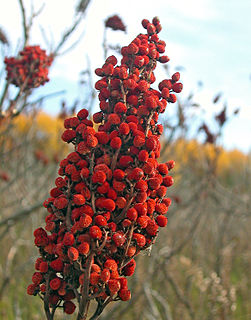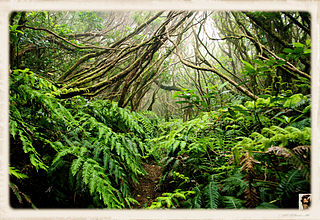Stinkwood, german Stinkholz, french Bois Puant, is the common name for a number of trees or shrubs which have wood or plant parts with an unpleasant odour, including:
- Anagyris foetida ; Southern Europe
- Bignonia callistegioides (cipó d'alho); Southern Brasil
- Celtis africana (white stinkwood); native to South Africa
- Celtis mildbraedii (Natal white stinkwood, red-fruited white-stinkwood); native to Tropical Africa
- Celtis timorensis ; native to South and Southeast Asia
- Coprosma foetidissima ; in New Zealand and extends South to the Auckland Islands
- Coprosma grandifolia ; New Zealand
- Coprosma putida ; endemic to Lord Howe Island
- Crateva tapia ; (Páo, Pau or tapiá d'alho) Brasil to Central America
- Cryptocarya latifolia (bastard stinkwood); South Africa
- Dysoxylum alliaceum (german Knoblauchbaum); Southeast Asia
- Eucryphia moorei ; Southeast Australia
- Fridericia elegans (cipó d'alho); Middle Eastern Brasil
- Foetidia clusioides ; native to Reunion and Mauritius
- Foetidia mauritiana ; native to Reunion and Mauritius
- Frangula caroliniana (Syn.: Rhamnus caroliniana); Southern United States
- Gallesia integrifolia (Syn.: Crateva gorarema) (german Knoblauchbaum, Páo, Pau d'alho); Brasil to Peru
- Gustavia augusta ; from South America
- Gyrocarpus americanus ; pantropical tree in family Hernandiaceae
- Jacksonia furcellata (grey stinkwood); native to Australia
- Jacksonia sternbergiana (green stinkwood); native to Australia
- Juniperus sabina (german Stinkholz); Middle Europe to Asia
- Lasianthus purpureus ; Indonesia
- Mansoa alliacea (cipó d'alho); Northern South America
- Nyssa sylvatica ; eastern to southeastern United States
- Ocotea bullata (black stinkwood, true stinkwood); native to South Africa
- other species of Ocotea , e.g. Ocotea foetens (Til, tilo), native to Macaronesia
- Olax zeylanica (german Stinkholz); Sri Lanka, Bangladesh
- Olax stricta (german Stinkholz); Eastern Australia
- Owenia cepiodora (onionwood); Australia
- Pararchidendron pruinosum ; Eastern Australia
- Piscidia carthagenensis ; Central America to Northern South America
- Petersianthus macrocarpus (bastard stinkwood); South Africa
- Pseudosmodingium perniciosum (Syn.: Rhus perniciosa); Western Mexico
- Prunus africana (red stinkwood); native to montane Subsaharan Africa
- Rhus aromatica ; Eastern United States to Mexico and Tadzhikistan, Uzbekistan
- Saprosma arborea ; Indonesia
- Scorodophloeus zenkeri (german Knoblauchrinde, garlic tree); Cameroon, Congo, Zaïre
- Seguieria americana (german Stinkholz, Knoblauchholz, as „Seguiera floribunda“, Páo, Pau or Cipó d'alho); Northern South America
- Sorbus aucuparia (german Stinkholz); Europe to Western Russia, Iran
- Sterculia foetida ; India to Southeast Asia
- Styphnolobium japonicum (Syn.: Macrotropis foetida); from South China
- Sideroxylon foetidissimum ; Florida, South Mexico, Guatemala, Antilles
- Zieria arborescens ; native to Australia
| This page is an index of articles on plant species (or higher taxonomic groups) with the same common name (vernacular name). If an internal link led you here, you may wish to edit the linking article so that it links directly to the intended article. |










